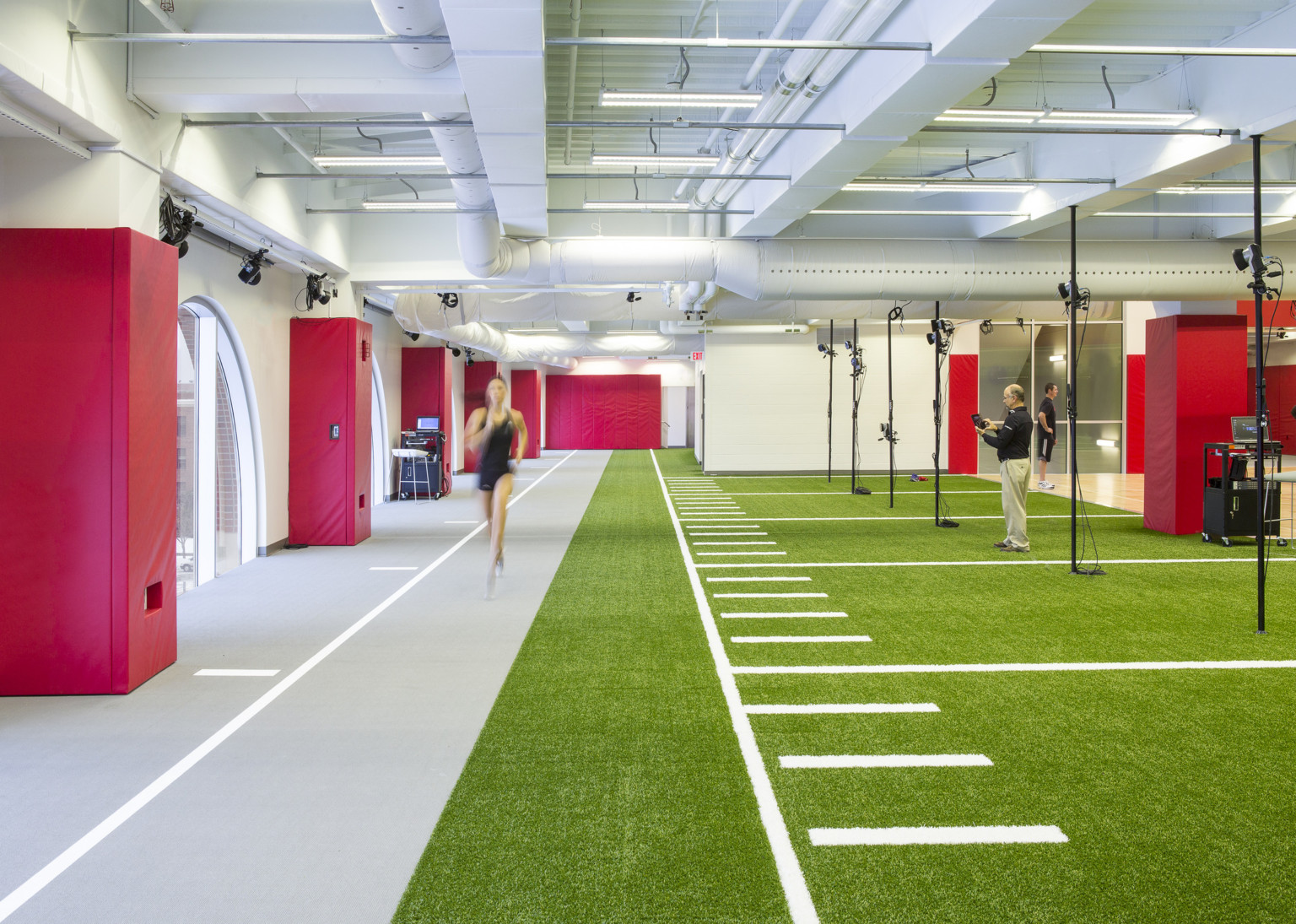
Student-Athlete Foundations for a Design Career
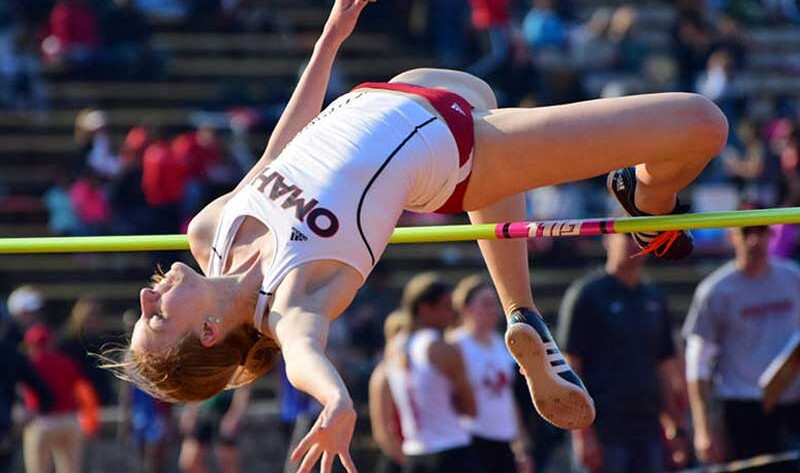
To highlight the 50th anniversary of Title IX, I had the pleasure of sitting down with three co-workers and former student-athletes: Monica Duren, who participated in diving at the University of Nebraska Omaha; Steph Ahrens, who specialized in the high jump for the track and field team at the University of Nebraska Omaha; and Stephanie Williams, who was a member of the track and field team at Cal Poly.
We discussed their specific collegiate experiences, the advice they’d share with future female competitors, their views of Title IX, and more.
Describe your overall student-athlete experience.
MD: My overall experience improved significantly after a new coach arrived my junior year. He understood my desire to prioritize education above athletics, and he adjusted my practice schedule around my class schedule. During my last two years I felt I was afforded the same training and opportunities as my teammates who prioritized athletics over academics.
SA: I loved competing in track and enjoy coaching today. My main event was high jump. As a competitor I experienced a lot of highs and lows, but thankfully more highs.
SW: My student-athlete experience was amazing but not traditional as I was not on scholarship. I ran track in high school and held my high school’s record for the 400-meter dash. Even though I was recruited by other schools, I selected Cal Poly for academics and location, not track. When I realized I wasn’t ready to be done with running, I decided to try to walk on to the team. I trained diligently all summer, made the team, and competed from Day One. I even competed at the conference championship event all four years. Being a student-athlete taught me accountability, discipline, and time management.
What is the one thing wouldn’t you change about your experience?
MD: I learned a lot about independence and responsibility. I wouldn’t change the lifelong friendships I’ve made bonding over similar experiences.
SA: My favorite moments were those with my closest teammates and favorite coaches. I wouldn’t give up those lifelong relationships for anything.
SW: Other than asking for financial assistance, I wouldn’t change a thing. I pushed myself hard to prove to my coaches that I could compete with sought-after, recruited scholarship athletes, and I trained with elite runners — even teammates who went on to compete in the Olympics.
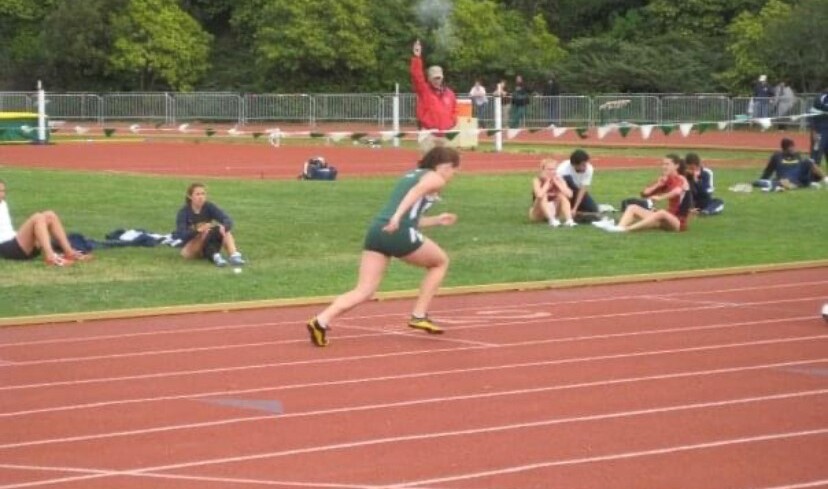
What role does athletics play in preparing people for life after college/your professional career/adulthood?
MD: I learned the importance of working hard for your goals and taking responsibility for your own path in life. Life is not always fair, and you can’t expect to have things handed to you. All actions have consequences, good and bad, and it’s ultimately your responsibility to set yourself up for success.
SA: One of the most important lessons from participating in sports is how to succeed – and how to fail – with grace. It’s something that you learn from the very beginning, and something that continues to develop as the stakes get higher and higher.
SW: I’ve always been a team player and track strengthened my love for being part of a team. My experience taught me that hard work pays off, the importance of time management skills, and helped me better understand accountability. All these skills have made me a better team member in my current role as interior designer at DLR Group.
What do you believe is the greatest impact of Title IX?
MD: Title IX gives lower-revenue women’s sports a place in Division 1 athletics and keeps opportunities open for women in sports that otherwise might be eliminated.
SA: Title IX’s greatest impact is women gaining equal opportunity to funding for their degrees. It’s important to prioritize school and be a student before an athlete. The funding available to young women will help prepare them for careers and for the rest of their lives.
SW: My childhood was full of opportunities and sports exploration because of Title IX. I was given the opportunity to try every sport I wanted to. In high school I played soccer, volleyball, and ran track. I am thankful that Cal Poly had a men’s and women’s track team so I could realize my potential as a college student-athlete.
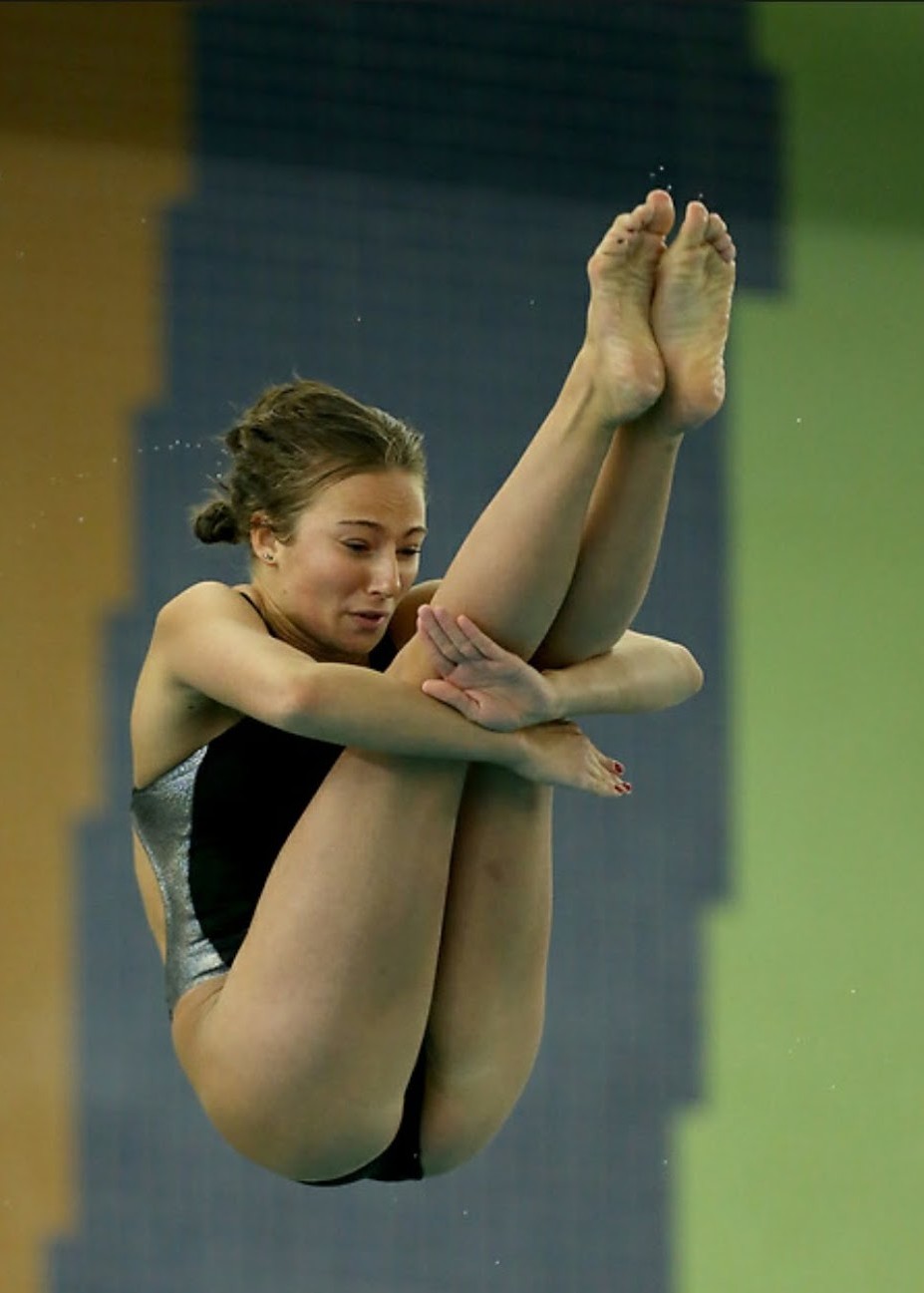
How did the university equalize opportunities for men’s and women’s programs?
MD: All student-athletes had access to the same resources, such as the weight room, training room, physical therapy, and a study room with advisors specifically focused on student-athletes.
SA: I am thankful for the equal funding opportunities and scholarships for female student-athletes. Above all things I did in college, I am most thankful for the opportunity to get my degree debt-free.
SW: Track and field as a program was unique in the sense that we competed together, trained together, and were a joint team. I felt that all training facilities and schooling opportunities in terms of resources were equal, and the treatment of athletes was equal.
Do you feel that you were treated equally to men’s programs and why?
MD: Yes. I believe men’s and women’s swimming and diving programs were treated equally. The difference in facilities/scholarships/benefits was likely due to the program not being a high revenue sport like some of the others, such as hockey.
SA: Generally ,yes, but I personally witnessed the promotion and celebration of some popular sports – mostly men’s programs – over track and field. I placed fifth in the nation in my last collegiate meet and was an All-American, however that night, the athletic department opted to promote a men’s basketball conference game on social media instead of my achievement. I was hurt because for me, personally, that was a night to celebrate.
SW: Absolutely. Due to how track and field is organized, everyone trains together and is exposed to the same type of training and coaches.
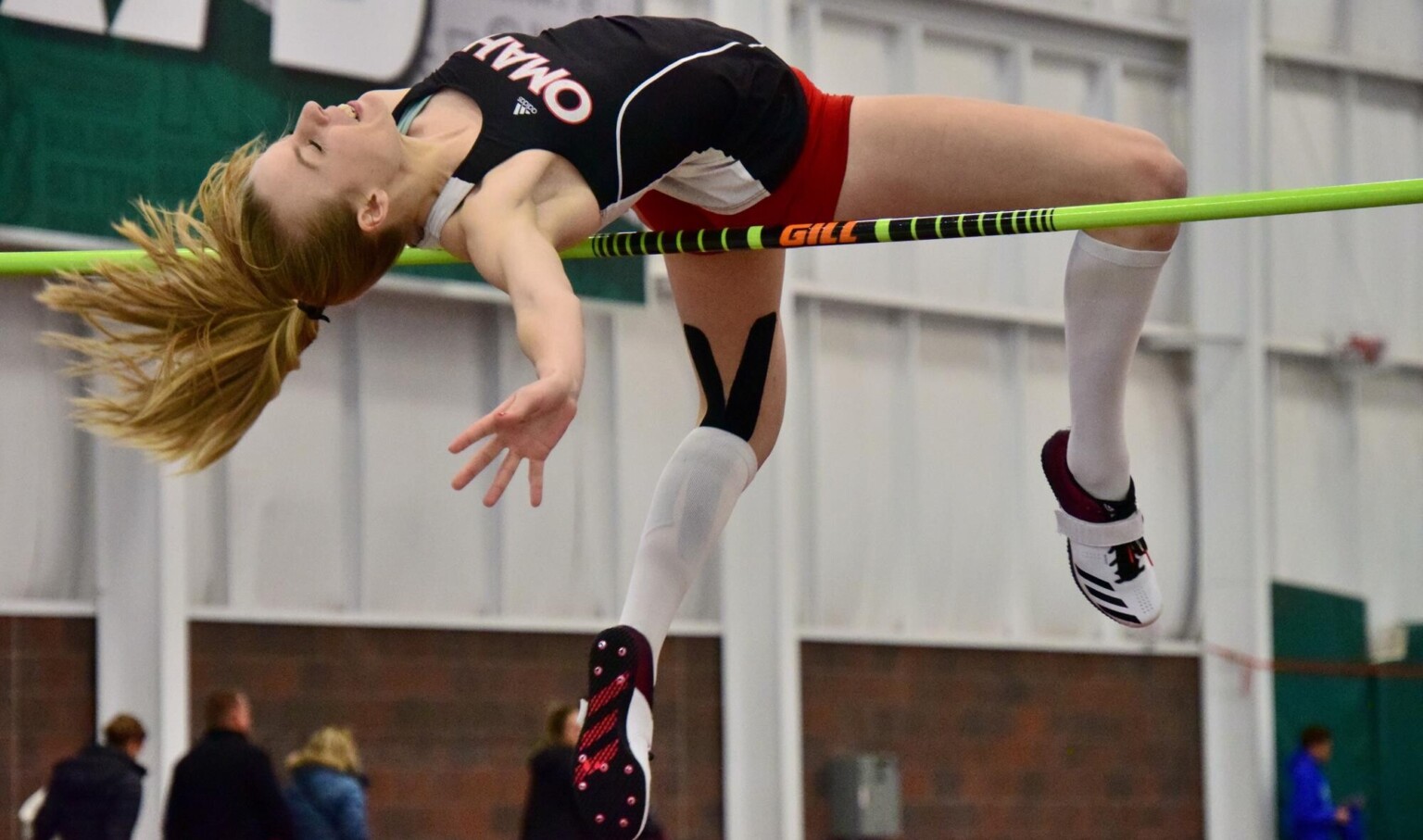
What types of facilities were available to help you train/compete?
MD: Student-athletes in the swimming and diving program were offered a pool; two 1-meter springboards; two 3-meter springboards; a trampoline with a harness; various dryland equipment; a weight room with weights coach; and a training room/physical therapy room. Recently, the pool was renovated to elevate it as one of the best swimming and diving facilities in the conference.
SA: The program did not have a track. Student-athletes trained on a 165-meter track that was not regulation size, and was striped on concrete. We rolled out black rubber strips to run on and pulled out the high jump mat to practice. My coach requested a larger high jump mat because ours was so small that I regularly fell off during practice, including one day in front of the athletic director. My teammates and I laugh about that day because that’s when the funding was finally approved for a larger mat. Despite it all, I’m proud of what I was able to achieve with limited resources.
SW: Track and field student-athletes had access to a weight room, track, training room, tutors, and academic success spaces.
What was your proudest moment as a female student-athlete?
MD: I’m proud that I earned Diver of the Year my senior year, while also holding an internship, working on undergraduate research, and keeping up with the intense engineering coursework to graduate with a master’s degree in five years.
SA: I jumped through light hail at my first national championship. Other competitors were not competing at their best, but because I’m from the Midwest, this was something I’d certainly done before. Although I was not favored to place, I pushed through the conditions for an 8th place finish and my first All-American honor. I was thankful for the resiliency my coaches taught me, and at that moment I was honestly thankful for all the inclement weather we experience in Nebraska.
SW: My proudest moment came after three years of running the 400-meter when my coach challenged me to run the 800-meter and I placed in my first race. This was a big mental switch for me. Physically I knew I could, but track is a mental sprint. Other proud moments are successfully walking onto the team, and making it to conference every year. The support from my coaches and team helped make me the best athlete I could be.
What advice would you give future female student-athletes?
MD: Being a student-athlete will be the most challenging four years of your life, but also the most rewarding. Embrace the challenge and lean on and support your teammates because you’re all in it together.
SA: Be an advocate for yourself, even as a member of a team sport. No one else knows your body or what you are going though better than you do. I’ve found that most people will hear you out once you get the courage to speak your mind.
SW: Your mind is the most powerful muscle in your body. If you put your mind to something, you can do it. But also listen. Listen to your body and how you are really feeling. I retired after my junior year and don’t regret that decision. My body and mind had reached a point that if I continued, I would not have ended my track career on top. I immensely enjoyed being a student-athlete, but also enjoyed spending my senior year simply as a student.










